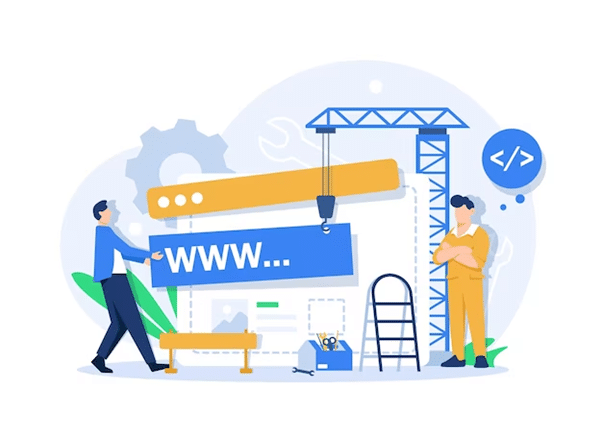One of the most critical needs for contemporary organizations and corporations is the development of websites. It is crucial to possess an authoritative online presence with fully operational, search-engine-optimized web pages that give customers a better user interface. Having feature-rich web apps and websites is essential for fostering online enterprises, given the recent fast move towards online mediums.
Web development is a thorough technique with multiple plans and execution phases. Assessment, layout, programming, testing & review, deployment, and maintenance are the primary stages of the creation of a website.
To make your online concept come to fruition, it’s essential to work with website builders like web design company Dubai who have vast knowledge of the sector and a high level of skill.
In this article, we go into great detail about the many steps involved in creating a website, along with how to find the top web developers available.
Table of Contents
Various steps of the development of a website:
As we’ve already discussed, web development is a complex technique with several components and sections. For the most significant outcomes, it is essential that all of the many departments coordinate their efforts toward a single goal and that the web development workflow process is as efficient as possible. Let’s examine the many phases of the creation of a website.
1. Analysis:
You should thoroughly understand your website’s objectives and how these targets might be met, which requires knowing the analysis and knowledge-collecting phase of the web development process paradigm. Web developers collaborate with customers at this stage to comprehend their demands and choose the most effective approach to addressing them.
This includes establishing profiles of users, studying users, rival websites analysis, technical suitability testing, site mapping, and graphical development. You may start creating a plan to accomplish your objectives once you have a firm understanding of your focal points and objectives.
The objective of the analysis phase is to fully comprehend the issue that a web page is attempting to address in order to identify the perfect answer.
2. Design:
Considering it drastically influences the UI/UX of the internet page, the design stage of the web development process is essential. Your web page should have a responsive layout that is straightforward and feasible to use. Analyzing the needs of the customer, the web creators are in charge of producing an optimal layout for the website.
To give consumers a packed with functions and multimedia expertise, the website framework is combined with the visual elements and information in that stage, including activity layouts, navigation panels, photos, and clips. You may create effective designs using the most recent frameworks, libraries, and design components with the assistance of seasoned web developers who are up to speed with the most recent web development patterns.

3. Development:
The actual code for the website is written during the development and coding stages of the process for building a website. Various coding languages can be used for this based on the website’s requirements for operation. This is the stage where the web developer puts all of the designs, wireframes, and other components into a website that works properly.
The creation of code and putting up functionality for the server are two examples of the many jobs that might be included in the coding process. However, in order to accelerate the procedure, coders typically choose to use previous techniques or platforms. In certain situations, the entire site may be created from the start. The implementation of web extensions, new features, and security integration are also part of the creation process.
4. Review and testing:
The next step is to thoroughly test the web page after it has been designed and developed in order to fix any issues or errors before it goes live. This is one of the most important but underappreciated phases of the development of a website. To make sure that the website is operating as planned and at its best, many testing strategies and processes are used.
There are two broad groups into which testing may be assorted:
- Functional testing: This type of testing concentrates on ensuring that the website carries out the duties for which it was designed.
- Non-functional testing: Non-functional testing evaluates the accessibility, protection, and efficacy of a website.
To make sure that a web page is void of errors, testers run a number of tests throughout the creation procedure, including unit tests, integration tests, and system tests. Following the website’s debut, it’s crucial to keep an eye on how it’s performing and deal with any problems that may appear. The construction of websites of superior quality that satisfy the expectations of their customers may be achieved by thoroughly testing each stage of the process.
5. Deployment:
The procedure of making the website or application online is known as the deployment step in web development. Code must typically be moved from a development or staging server to a production server in order to do this. Depending on the size and complexity of the endeavor, the deployment process may require several processes, such as preparing the system, compressing data, establishing cached information, and implementing a load-balancing system.
6. Maintenance:
In order to guarantee maximum efficiency and ongoing improvements according to evolving demands, maintaining a website is an essential part of the web creation procedure. The maintenance stage comprises routinely tracking the effectiveness of the web page and distributing regular revisions for enhanced functions and operation.
For the installation of solid security measures and an enhanced user interface, regular updates are also crucial. Various duties, such as updating software, data backups, observing traffic, and vulnerability scans, may be part of maintaining a website.
By doing maintenance frequently, you can guarantee that your website is always ideal for consumers and that it is always pertinent, informed, and approachable. As a necessary component of web development, management must be given sufficient attention and funding in the context of your entire web development plan.
Conclusion:
Organizations must prioritize web development. Therefore, in order to create effective and engaging websites, it is essential to have a thorough grasp of the web development process and the technology stack involved. In order to assist you in streamlining your procedure and developing a comprehensive plan for the development of the website project, we have supplied crucial web development perspectives, ranging from the various stages of the procedures to employing web professionals like Web Design Company Dubai.


